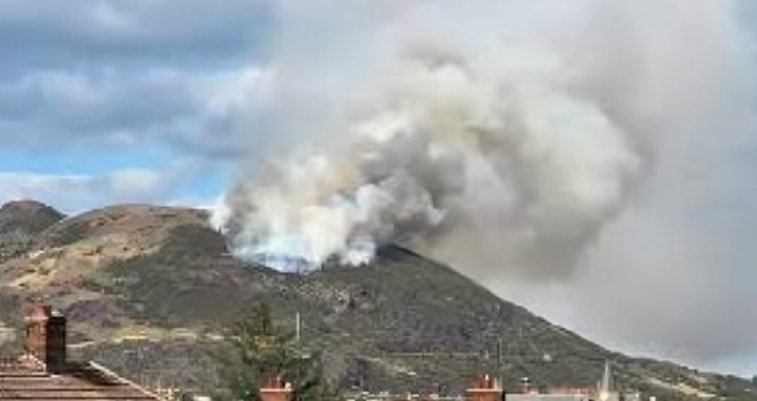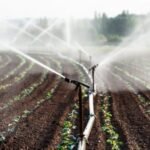Authorities have sounded the alarm again, with a fresh wildfire risk alert covering most of Scotland after a blaze scorched Edinburgh’s iconic Arthur’s Seat.
The Scottish Fire and Rescue Service (SFRS) says the warning — in force from Wednesday for seven days — marks the 10th such alert this year.
Arthur’s Seat Blaze Adds Urgency
Flames were spotted on Arthur’s Seat on Sunday evening.
Smoke billowed over the capital, and flickers of orange could be seen from the city streets below.
Crews rushed in to tackle the fire, which ripped through gorse and brush on the slopes.
The fire service believes it was caused by human activity — a finding that’s prompted a sharper call for caution.
It wasn’t a huge surprise for fire officials. They’ve been warning that Scotland’s hot, dry spells, coupled with careless behaviour outdoors, create the perfect wildfire conditions.

Warning Timeline Covers Most of Scotland
The new alert is unusually broad.
It kicks in Wednesday for eastern Scotland, lasting until Friday, before expanding over the weekend to cover both east and west.
By Monday and Tuesday next week, the warning stretches across almost the entire country — from the central belt to the southern uplands.
For clarity, here’s the expected coverage:
| Dates | Regions Affected |
|---|---|
| Aug 13–15 | Eastern Scotland |
| Aug 16–17 | Eastern & Western Scotland |
| Aug 18–19 | Most of Scotland, incl. central belt, south uplands |
SFRS says this breadth of coverage is rare but necessary, given the combination of dry vegetation, warmer-than-average temperatures, and forecasted wind patterns.
Public Urged to Avoid Naked Flames Outdoors
The advice is blunt: no barbecues, no campfires, no disposable grills, no fireworks — anywhere in or near wildland areas.
An SFRS spokesperson put it plainly: “A single spark in the wrong place can cause devastation.”
And devastation isn’t an exaggeration. Once gorse, heather, and grass catch, they burn quickly and spread unpredictably.
One sentence stood out from their guidance: “Don’t assume a small flame is harmless — it can grow faster than you can run.”
A Year of Record Warnings
Ten “very high” risk alerts in one year is remarkable.
It’s not just about this summer being warm and dry — Scotland has had a run of large-scale wildfires in 2024 and 2025.
In the Highlands earlier this year, crews fought what’s believed to be the largest wildfire in the country’s history. That blaze tore through vast tracts of moorland, destroyed habitats, and left a scar still visible from the air.
Now, with August barely halfway through, officials are looking at weather models and seeing more trouble ahead.
Why Wildfires Hit Hard in Scotland
Scotland’s landscapes are stunning — but they’re also flammable in the right conditions.
Dry heather, pine forests, and peatlands hold onto embers and can reignite hours after a blaze is thought to be out.
Climate scientists warn that hotter summers and shifting rainfall patterns are increasing the risk.
A 2024 Met Office report found the average length of Scotland’s “fire weather” season has grown by 20% since the 1980s.
And while wildfire risk is still lower here than in southern Europe, it’s no longer rare. SFRS data shows incidents have increased steadily over the past decade.
Balancing Tourism and Safety
The timing is awkward.
August is peak tourist season — Edinburgh Festival, Highland walking trails, coastal camping trips. Visitors aren’t always aware of the risks, especially if they come from wetter, cooler climates.
That’s why SFRS is working with local councils and VisitScotland to push warnings on social media and at tourist hotspots.
Signs have gone up in national parks, and rangers are stepping up patrols in fire-prone areas.
Still, there’s a tension. No one wants to scare off visitors, but officials are clear: better a few wary campers than a major blaze.
What to Watch for in the Coming Days
The coming week will test Scotland’s fire readiness.
Eastern areas are most at risk first, with winds expected to carry potential flames rapidly across open land.
As the weekend approaches, forecasters expect the danger zone to spread westward. By early next week, most regions will be under watch.
For residents, that means staying alert to smoke or flames and reporting anything unusual quickly. For visitors, it means respecting the “no flames” guidance — and realising it’s not just a polite suggestion.


















